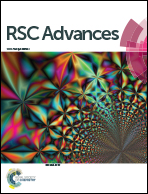Normal and abnormal dielectric relaxation behavior in KTaO3 ceramics
Abstract
KTaO3 ceramic samples were prepared via a conventional solid state reaction route. The dielectric properties of KTaO3 were investigated in temperatures from room temperature to 1000 K and the frequency range of 102–106 Hz. The sample exhibits an abnormal dielectric behavior contrary to the traditional thermally activated behavior in the temperature range below 450 K. Our results revealed that the sample was very sensitive to humidity, leading to a metal-insulator transition (MIT) at 473 K. It is the positive temperature coefficient of resistance of the MIT that results in the abnormal dielectric behavior. When the temperature is higher than 500 K, the sample shows two normal dielectric relaxations following thermally activated behavior. The low- and high-temperature relaxations were argued, respectively, to be related to dipolar relaxation and Maxwell–Wagner relaxations due to oxygen vacancies hopping inside grains and then being blocked by grain boundaries.



 Please wait while we load your content...
Please wait while we load your content...